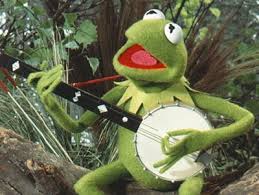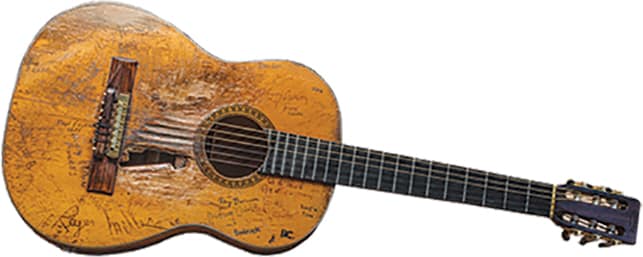Getting started with banjo
 Some basic considerations when getting started with banjo. What type of banjo? What materials are helpful, etc.
Some basic considerations when getting started with banjo. What type of banjo? What materials are helpful, etc.
Short version: Get a Deering Goodtime banjo, some fingerpicks, a cheap good tuner, and the classic Earl Scruggs 5-string banjo book.
Long version: There are a variety of considerations when getting started with banjo. The first choice is what kind of banjo. There are a few basic options: 5-string, tenor, plectrum, and of course those 6-string banjos for guitarists who need to fake the occasional banjo riff.
The most popular banjo-type is the 5-string banjo. This is the instrument you hear in bluegrass, and most bluegrass-influenced modern rock (Mumford and Sons, Avett Brothers, etc).
So, assuming that you are on-board with a 5-string banjo, the next choice is open-back vs. closed-back. Open-back banjos tend to be favored by clawhammer players (an old-time style). Folks in the bluegrass tradition usually like the louder, more ringing sound of a closed-back banjo. You can play bluegrass on either style (open vs. closed), so it’s also a matter of taste. Open-back banjos are a lot lighter – something to consider, if you intend to be a wandering minstrel.
The main thing is to just get a decent, inexpensive 5-string banjo to learn on. Then later, when you are a pro, or win the lottery, you can pick-up one of those beautiful gold-inlay models. These days, I’d recommend buying an instrument right off of amazon. They have a great return policy, and deliver right to your door, lickety-split. Two recommendations:
A) The best banjo for beginning/intermediate students: Deering Goodtime – open-back or closed- back
B) A well-liked and very inexpensive banjo: Gold Tone. A great value, but quality won’t be on par with the Deering, but a decent instrument at a very inexpensive price (approximately $200).
Naturally, it would be a good idea to pick up a case. Here’s a nice “gig bag” for approximately $25. “Gig bags,” are light and inexpensive – like a backpack for your banjo – great for an entry level instrument. If you get a high-end instrument, or plan to take it on an airplane, you’d want to invest in a hard shell case that fits your specific banjo.
The next thing you’d want to do is get basic essentials, all of which are quite inexpensive. a) strings – eventually you’ll break one, or it’ll be time to change them) b) fingerpicks c) a cheap, good tuner, and lastly d) The classic Earl Scruggs Banjo Method.
Now all you need is a great teacher. Red Pelican Music offers terrific banjo lessons online, as well in-person banjo lessons in the Los Angeles area 🙂
By Brian Robbins
Buying your first guitar!
So, you want to learn to play the guitar? Fantastic! But first you need an instrument, and you probably have a lot of questions. Here are some quick recommendations when buying your first guitar, with a helpful FAQ, right next to Willie’s guitar . . .

Willie Nelson’s famous guitar, “Trigger”
Quick recommendations
If you are adult, who is interested in acoustic guitar, you might consider picking up a Jasmine guitar (approx $100). These instruments are a real bargain and perfectly fine for a first guitar (that will eventually be your beach guitar). Of course if you have a bigger budget, by all means spend a bit more – there is definitely a correlation between price and quality (and easy playability)
If you are an adult, who is interested in an electric, consider an inexpensive Stratocaster (the “Squier” is their entry level model)
If the instrument is for a very young student, definitely get a mini-sized guitar. The “baby Taylor” is a great example
All students should get the basics – picks, a tuner, music paper, and a good guitar book ie. the Hal Leonard Guitar Method
Electric students should get a practice amp, and a cable.
And now, our FAQ for new guitar students . . .
Is it better to start on an acoustic guitar, or an electric?
No problem either way! You will be learning the same basic guitar skills, especially in the beginning, so it’s really a matter of personal taste. For example, if you love singer-songwriters, get an acoustic. If you dream of playing Hendrix solos, consider an electric. You’ll eventually want both anyway!
Way back when, students were advised to start on acoustic guitars. The reasons for this, are largely outdated. In an earlier era, the electric guitar was seen as more of a gimmick, a less serious instrument (the electric guitar is fairly new – only dating back to 1931). Also, there was the complexity of needing an amp, cable etc.
Fast-forward to the 21st century – the electric guitar is considered a serious instrument, amps and cables are inexpensive, and there are actually a few big advantages to starting with an electric guitar. For example, the “action” is generally much lower on electric guitars. The “action,” is the height of the strings off the fretboard. The lower the action, the easier it is to fret a note. Low action = less discomfort for beginners that haven’t yet developed finger callouses. Also, electric guitars typically have a thinner string gauge – easier on the fingers. Finally, the neck and body sizes of electric guitars are typically much thinner than acoustic guitars, so it’s often easier for smaller sized folks to start on an electric.
Of course, on the flip side, it’s more difficult to bring an electric guitar camping, or to the beach – you’d need an amp. Also, it’s important to note that the comfort advantages of starting with an electric guitar can be thought of in reverse. If you start on an acoustic, when you switch to an electric, it will feel ridiculously easy – like a powerlifter picking up a feather. We’ll okay, that was a bit of an exaggeration ?
In summary, although most people start with an acoustic guitar, it is purely a matter of preference. You’ll be fine either way!
Does it make sense to rent a guitar?
Probably not. These days, you can buy a brand new guitar that is perfectly fine to learn on for $100. It won’t be a Martin solid top with beautiful inlays, but it won’t be junk either. When you get some skills, and buy a beautiful, expensive guitar, your first guitar will become your beach guitar.
I’ve got a bigger budget, does it still make sense to buy an inexpensive instrument?
Buying a guitar is a lot like buying a car (although generally less expensive). There are a lot of subjective choices. ie. do you prefer a manual transmission to an automatic? Generally most folks learn to drive fairly well, before buying a nice car, so that they are educated about the subjective (and objective) differences.
Guitars are the same way. That’s why I typically recommend starting with an inexpensive instrument. That way, you don’t have to worry about picking the perfect guitar, right off the bat. That said, if you have a bigger budget, by all means spend a little more. You’ll get better craftsmanship in a $400 guitar than you will in a $100 guitar. Just give yourself a little time, before buying that $3000 vintage telecaster – so you feel comfortable picking the right one!
I am left-handed, should I play “righty?”
This is an area where you will find conflicting advice, and there is no “right” answer, if you’ll pardon the awful pun.
It’s much easier to find right-handed instruments. For this reason, many left-handed guitarists play right-handed guitars, often with great success. That said, the most important thing is to find what feels good to you, so if you instinctively have a big preference for holding the instrument as a lefty, it might be worth the extra effort to find a left-handed instrument.
One other thing to consider. When right-handed guitarists play, their left hand is doing a lot of the physical work (the right hand is the picking hand, the left hand is the fretting hand). So . . . there is a compelling argument that right-handed guitarists are playing backwards anyway ?
Should I get a small-sized guitar?
If you are buying a guitar for a very young person, I would strongly suggest getting a mini-guitar. The awkwardness of trying to learn on a full-sized instrument, can be really frustrating.
For adults who are small, you might consider starting with a (full-sized) electric (much thinner body than an acoustic), or if you prefer acoustics, consider a “parlor guitar,” a smaller bodied acoustic.
What do I need to start playing electric guitar?
Aside from your electric guitar, you’d need an amp and a cable. Cables are usually around $15, and you can buy a practice amp for approx. $100.
What is the difference between a classical guitar, and an acoustic guitar?
First, I should mention that both a “classical guitar” and an “acoustic guitar” are acoustic instruments, and you can play whatever style of music you like on any guitar. That said, “classical” guitars have nylon strings (for the high strings), a thicker neck, and a different body shape. Classical guitars sound a bit more mellow, and steel stringed acoustics are typically brighter in timbre. When a person says they have an “acoustic” guitar, they usually mean that it has all steel strings. If they have a nylon stringed “classical guitar,” they will usually refer to it as a “classical guitar.”
Classical guitars are used in classical and flamenco styles – If you enjoy listening to Segovia or Pepe Romero, you might consider getting a classical guitar. If you prefer folk or blues, you might be better off with a steel string acoustic. Either is fine to learn on!
What other things do I need?
Just a few things. Aside from your guitar, you’d want to get some picks, a good, cheap tuner, a case or a gig bag (a “gig bag” is like a backpack for your guitar), and a good method book. If you have an electric guitar, you’d also need an amp and a cable. You might also need to get a guitar “set up” if it was preowned and needs maintenance.
Where can I get great guitar lessons?
If you are in the Los Angeles area, please give us a ring. (310) 893-0776. We have fantastic guitar teachers for folks of all skill levels. If you are not in the Los Angeles area, please contact us anyway! We also terrific virtual lessons! (Live online lessons).
Who’s guitar is in the picture?
It’s Willie Nelson’s guitar. As you can see it’s well-loved! The important thing to keep in perspective, is that while it’s great to have a beautiful instrument, a player’s sound is really in their fingers. If you were to give Willie’s guitar to the ghost of Django Reinhardt, it will sound like Django, and vice versa.
-Brian Robbins